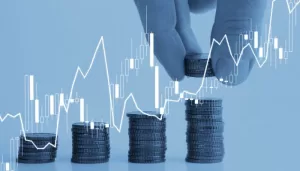Consideration of ESG Challenges within the Management Company’s functions

Today’s interview with Luigi Maria Vitelli, CEO & Managing Director of Pharus Management Lux SA, an Independent Third-Party Management Company based in Luxembourg incorporated in 2012 and authorized by the CSSF to manage UCITS, Alternative Investment Funds (AIFs) with a focus on hedge Funds, and discretionary mandates.
What is the role of a Management Company?
From the perspective of the investment Fund, a Management Company (hereinafter referred to as “ManCo”) is essentially an outsourced risk management and compliance function that is meant to give investors and regulators comfort that the Fund governance is conducted to a high standard and in the best interests of investors.
ManCos can choose several business models depending on the scope of services they can offer to the Fund. In this context, Pharus Management Lux SA (hereinafter referred to as “Pharus ManCo”) has decided to adopt a specific model by internalizing a maximum of services and thus being a unique player on the market with a 360° offer. An all-in-one offer including legal, distribution, investment portfolio management services in addition to the traditional oversight, risk and compliance functions.
Speaking about Risk Management, can you give us with a definition?
As we have said, Risk Management is one of the main functions performed by a ManCo. To understand what it is in a nutshell, we need to start with the definition of “risk” which could be summarized as follows: “the probability that a certain event will occur and cause damage”.
However, in the investment sector, the notion of Risk is also closely linked to the notion of return, which has a positive connotation. Risk does not necessarily mean loss, but often the likelihood of a greater gain.
Risk Management is therefore the function that supports the business in its decision-making process, which will be more effective if based on a risk-based approach.
What about Risk Management and ESG criteria?
Environmental, Social and Governance (ESG) criteria are dimensions encompassing the activities of a company that may have impacts on society or the environment:
- The environmental criterion considers waste management, the reduction of greenhouse gas emissions and the prevention of environmental risks.
- The social criterion considers accident prevention, staff training, respect for employees’ rights, the supply chain, respect for human rights and social dialogue.
- The governance criterion looks at the independence of the board of directors, the management structure, and the presence of an audit committee (e.g., anti-corruption and anti-bribery for instance).
From these criteria derives sustainability risk, which according to the law definition means:
“An environmental, social or governance event or condition that, if it occurs, could cause an actual or a potential material negative impact on the value of the investment.” (Art 2(22) SFDR)
The approach to sustainability risk is then to measure those ESG components that may have a positive or negative impact on the financial performance of investments.
Sustainability as a risk factor is relevant to all investments, while sustainability opportunities are typically relevant to the products that have an ESG objective (so-called “ESG Funds”). Prior to transactions, Fund managers should take ESG factors into account in their portfolio transactions, in accordance with their investment policy. Then, risk management should in turn integrate ESG factors into its overall post-trade assessment.
What is the sustainability challenge for your Company?
ESG dimension is constantly evolving and requires Fund managers to adapt their investment strategies.
Selection criteria and ESG scoring do not follow the same methodology from one player to another. Starting from this premise, this makes it difficult to establish a harmonized assessment of these criteria, despite standardization at European level, as local regulators have not yet defined a common scoring.
In this context, we are faced with a complexity between the implementation of ESG criteria and the resources available for their application. Due to the growing demand, multiple market players have emerged, such as ESG raters and data providers, who nevertheless lack transparency in their methods.
Pharus ManCo has signed a new partnership with Standard & Poor’s, using their “S&P Global” tool to provide an ESG risk analysis, classification and monitoring system for investments.
The S&P Global ESG Score provides essential ESG intelligence with an average of 23 criteria scores. With coverage of 7,300 securities, representing approximately 95% of global market capitalization, each of these layers of ESG company data is available to discover and derive meaningful investment signals.
“We wanted to establish a long-term relationship with a reputable player who excels in this field, knowing that Standard & Poor’s is an international rating company. The idea is to anticipate our client’s needs and find the most appropriate solution in a constantly changing environment. There are a multitude of benefits to paying more attention to sustainability risk and integrate it into the broader risk framework. By taking a more proactive approach, we enable greater investor attractiveness and long-term profitability.” says Mr. Vitelli
Based on this solution, Pharus ManCo has enriched its offer by integrating a complete and reliable scoring for ex-ante and ex-post-trade monitoring activities.
Luigi Vitelli added that the whole challenge was to anticipate the Regulator’s decisions for the ESG challenges. “In a way, companies have no choice but to take responsibility for their actions these days, especially when it comes to sustainability commitments. We decided to go one step further and enter this partnership with one of the leading rating players in order to get the right thresholds and trackers into our system as soon as possible. In my personal opinion, it is always better to be proactive, even if we have to readjust our actions later.”
Since the establishment of the Sustainability-related Disclosure Regulation (SFDR) in March 2021, all the Funds managed by Pharus ManCo have been classified into three categories, with the disclosure mentioned in the legal offering documents (i.e prospectus):
- Non-sustainable Fund under Article 6 of the SFDR Regulation
- Sustainable Fund under Article 8 of the SFDR Regulation (i.e., products that promotes ESG)
- Sustainable Fund under Article 9 of the SFDR Regulation (i.e., products that have a sustainable investment objective)
The several sub-Funds were then classified according to these principles in Pharus Manco’s risk and front office platforms, which are now integrated with S&P ESG scoring, so that the Risk Management and Portfolio Management departments are able to carry out a robust ESG assessment of the sub-Funds in accordance with their investment policy.
Ultimately, the rationale for ESG framework monitoring system we have developed is to get an overall portfolio score out of 100, the higher the score the more sustainable the Fund. Again, the question is to align and set threshold for pure ESG Fund, we will see how the Regulator will approach this in the near future.













